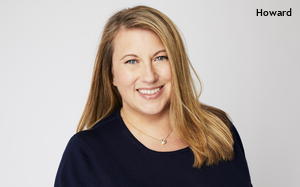Commentary
Style For Grownups: J.Jill Tells A New Story On TV
- by Sarah Mahoney , Staff Writer @mahoney_sarah, 9 hours ago

J.Jill is returning to television for the first time since the 1990s, launching a new brand campaign aimed at women 40+—and doing so with care, clarity, and measurable goals. The campaign, created in partnership with Marketing Architects, is running in select markets and marks a notable shift for the brand: a move from catalog- and digital-first marketing to a channel designed to blend reach with emotion.
Kara Howard, senior vice president of marketing and customer experience, says the ads are built around the insight that J.Jill’s customer is increasingly intentional. She shops with care, shares brand love selectively, and finds joy in getting dressed. Howard tells Retail Insider why the brand chose TV, and how she structured the test.
Interview has been edited for length and clarity.
advertisement
advertisement
Retail Insider: What was the problem you were trying to solve with this campaign—and why TV?
Kara Howard: One of our barriers
is awareness. We’re always trying to find the most effective ways to tell our story and grow awareness with our audience. That was the primary problem. The secondary was diversifying our media
mix. Historically, as a company built on catalog, we’ve done a lot with print and leaned into digital. We wanted to find another scalable platform to tell our story in a factual and emotional
way. We feel like this category has a lot of emotion—it has a lot of joy. People enjoy shopping for apparel.
Retail Insider: What makes TV such a good fit for your customer?
Howard: When we do research and talk to her about how she learns about new apparel brands, TV comes up. Print and digital are other platforms, of course. But when we looked at
viewership data, we saw that this was a nice alignment with our customers. And it also has that sight, sound, and emotion, as people always say about broadcast. You can show the product well, and you
can convey the feeling.
Retail Insider: How did you set up the test, and why include your home office market?
Howard: It just launched—it’s been in market
for 15 days. One of the nice things we did as part of the design of our test was to include our home office market. Our corporate office and fulfillment and distribution center are in the Boston DMA,
so we all benefit from experiencing it as a customer does. Every day, I get an email or a text from someone at J.Jill—or a friend of a friend—saying, “I saw J.Jill on
television!” That’s been exciting.
Retail Insider: You mentioned the importance of measurement, and TV is running in Denver and St. Louis, too. What results are you watching
most closely?
Howard: Measurement of everything we do is very important to us. We’ll continue to monitor the results, but we set it up to evaluate impact on many levels:
traffic to stores and our site, new customers it brings into the brand, and the awareness it drives. That was the primary goal.

Retail Insider: What will success look like?
Howard: Higher awareness, and then increasing our acquisition. We’re particularly interested in understanding its impact on our retail stores. We’re doing tight targeting of
the CTV aspect around our stores.
Retail Insider: Even without giving a dollar figure, how did you determine how much you’d have to spend to achieve that impact?
Howard: We did a lot of work to understand what kind of lift we’d need to get excited about and how to make sure it’s statistically significant. We looked at the sizes of
the markets we were in, the control markets, and said, “OK, we need to lift this much.” Then we asked, what kind of ROAS do we need? And if that’s the case, what budget gets us
there? We designed it around the readability of the test. We asked if that reach and frequency align with what we typically see in digital. We triangulated all of that.
Retail Insider:
You’re introducing the campaign during a change in leadership, with Claire Spofford, president and CEO, retiring, and Mary Ellen Coyne just beginning. What’s that like?
Howard: Claire was very supportive, and this campaign launched on one of Mary Ellen’s first days. One of the first things I told her about was this. She was very positive. She’s
similar to me, like, “OK, when are we going to see results?” Very eager to understand the impact and enthusiastic that we’re trying something new and leaning into brand
storytelling.



